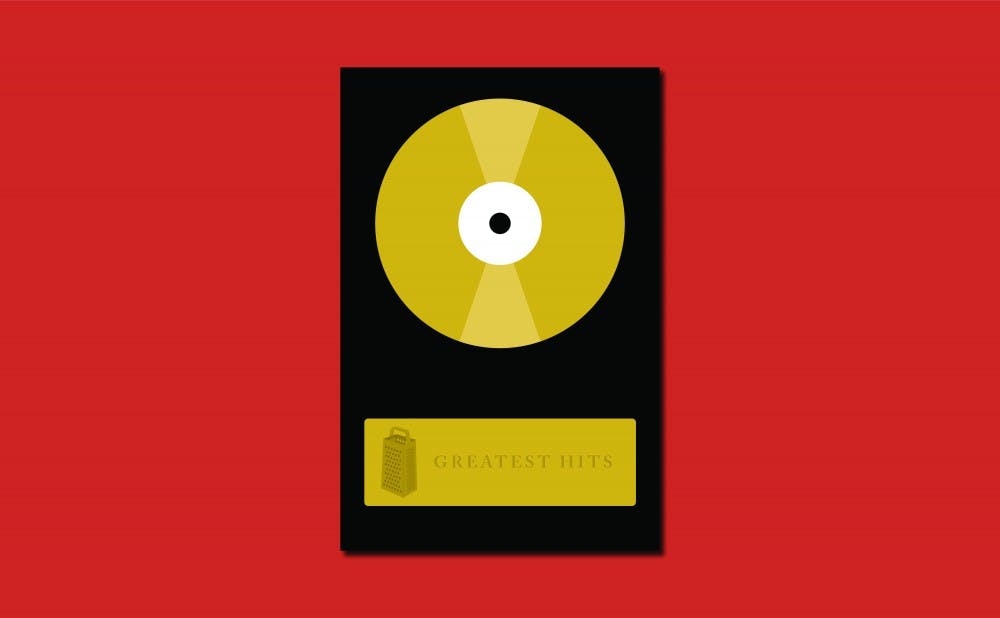My first introduction to the album format came through three records that, to many people, don’t even qualify as “albums,” in the strictest sense of the word: The Beach Boys’ “The Greatest Hits – Volume 1: 20 Good Vibrations,” The Monkees’ “The Essentials” and Squeeze’s “Singles – 45’s and Under.” With their bloated tracklists and curious obsession with the en dash, each of these titles has the designation not as an album but as a greatest-hits compilation, that dreaded domain of aging artists and cash-strapped labels.
Not that I cared — for all I knew, the glorious excerpts from “Pet Sounds” simply belonged on the same disc as, say, “Kokomo.” (I remember finding the former too quiet and melancholy for my ears, the latter much more memorable.) As for the other two, it was enough even to have “Daydream Believer” or “Up the Junction” on demand, and I usually didn’t bother with the back half anyway.
Only now, jaded by years of being conditioned to prize the cohesive album as the highest form of pop music, do these selections feel at all unnatural to me. Even though singles compilations have been around for as long as the music industry has existed, the ontological debate over whether a compilation — which is often put together by a label, independent of the artist’s input, and has an explicitly commercial motivation — actually constitutes an album has continued to be a controversial one, at least among some circles. Can Bob Marley’s “Legend,” a collection whose apolitical selections were explicitly geared toward white audiences, really be the 46th greatest album of all time, as Rolling Stone says it is? Is Buzzcocks’ “Singles Goin’ Steady” a seminal document of the punk era, or must it always have an asterisk next to its name?
According to the general public, at least, the answer seems to be clear. Just last year, The Eagles’ “Their Greatest Hits (1971–1975)” leapfrogged Michael Jackson’s “Thriller” as the best-selling album of all time. The Beach Boys’ “Greatest Hits – Volume 1” went double-platinum — a distinction “Pet Sounds” never achieved — while “Legend” continues to outsell every other reggae album on the charts. What this means is that, for those who still purchase physical releases, the greatest-hits compilation remains the most desirable way to consume music.
And who could blame them? Before the vinyl renaissance brought 180-gram repressings to every doorstep, those hits CDs were one of the only options this side of oldies radio for accessing the sounds of a previous generation. It comes as no surprise to me that this was how I found an introduction to those same sounds, retrofitted for a new era and readily available at the local Best Buy.
Yet the fact of these albums’ mass production in no way diminished my experience of them. In a way, they were even more personal: As far as I knew, there was no world beyond the CD I held in my hands, a collection that was specific to my time and place. The Monkees album, I would later discover, was a fairly run-of-the-mill compilation distributed by Rhino Entertainment that cropped up on shelves in 2002 and gradually faded into commercial obscurity. (It’s difficult even to find much information about the release online.) So why did it feel like such a definitive portrait of the band? Unencumbered by the need to couch everything I heard within a set of established canons and acceptable opinions, I experienced the music as it was, which is to say however a label felt like cobbling together an artist’s body of work at that particular time. Although the circumstances of the release may have suggested otherwise, everything from the cover art down to the liner notes told me I was listening to something special, with as much claim to the title of “album” as any other.
At a certain point, of course, most of those CDs simply disappeared, falling into disuse and getting buried in the attic. The Squeeze disc I accidentally destroyed; it got caught behind a dresser and snapped in two. Years before streaming made it possible to access every one of these collections at will, this loss was quite literally irreparable. It was as if an entire era had gone with it, and even if we did replace it, it wouldn’t be quite the same.
When it comes to culture, we tend to prefer things as we first encountered them. The first track always sticks; the debut album will always be the best one; the director’s sophomore feature always disappoints. From time to time, I’ve attempted to salvage the greatest-hits compilations with which I grew up from the offerings of streaming, drawing from an incomplete memory of tracklists and titles. Even as I’ve expanded my knowledge beyond those limited selections, I’ll always long for the thrill of discovery they gave me. I’ll probably never sit down for an entire Squeeze album — in my defense, they were more of a singles band anyway — but I can always get down to “Cool for Cats.” And with all respect to “Pisces, Aquarius, Capricorn & Jones Ltd.,” I’ll probably just skip to “Pleasant Valley Sunday.”
Among musicians and critics, there’s a lot of talk of the “first album,” the one that changed it all (the one that, in the old days, meant rushing to the record store on release day). For me, there were three, and none of them were albums, exactly. I would later develop the patience to sit down for a full 40 minutes, to value things like concept and sequencing and production. But at that point, and sometimes still today, all I really needed were the hits.
Get The Chronicle straight to your inbox
Signup for our weekly newsletter. Cancel at any time.

